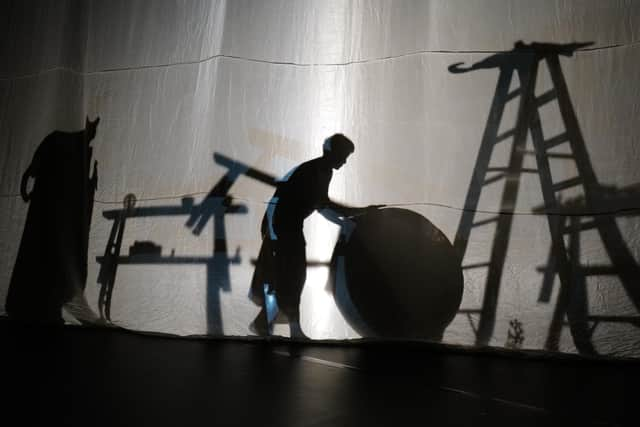Edinburgh Festival Fringe Dance & Physical Theatre Reviews: No Dragon No Lion | The (Hong) Kong Girls | Diary VII: The Story Of...
No Dragon No Lion ***
C Arts (Venue 19)
The (Hong) Kong Girls ***
Summerhall (Venue 26)
Diary VII: The Story of . . . ****
C Arts (Venue 19)
All until 13 August


Set up in 2023 with the aim of showcasing the diverse work being created in its homeland, the Hong Kong Soul platform has arrived in Edinburgh with a rich tapestry of dance styles. Through the work of five choreographers we get a glimpse into the Hong Kong of past and present, experiencing its energy but also peering into its darker side.
TS Crew are the party-starters of the line-up, with eight dynamic dancers and two beat-boxers lighting up the stage. No Dragon No Lion pays homage to Hong Kong’s traditional ‘Lion Dance’ by taking its ritualistic moves and giving them a new twist. There’s no shortage of athletic flips, breakdance moves, martial arts, slapstick comedy and acrobatics in this hour-long show, which is occasionally to its detriment.
Advertisement
Hide AdArtistic director, Hugh Cho has thrown everything his group has into the pot, when a slightly more streamlined offering might ultimately have been more impactful. But there’s no denying TC Crew’s hard work and passion, and when they come together for a tightly-knit dance routine these multi-faceted performers really show their mettle.
Mui Cheuk-yin was 26 when she took her first steps into the ‘Diary’ project, an autobiographical dance journey charting her life and surroundings. Now aged 63, one of Hong Kong’s most respected dancers and choreographers has reached Diary VII: The Story of . . . . So much has changed, in both her life and country, that you can feel the weight of memory running through this beautiful and moving one-woman show.
Stretching lithely, Mui’s movement style belies her years and echoes beautifully the feline characters in her diary. For although she’s the only performer on stage, she is most definitely not alone. A cut-out cat sits on a revolving platform, a nearby light casting its shadow on a large white backcloth. As the piece unfolds, it’s joined by three more, each looming large above Mui as she dances alongside them.
A voiceover (translated in the programme notes) gives a sense of her relationship with the feral felines that populate her city, and a sense of kinship. At one point, the shadows shift to depict chaotic furniture piled high, the cats endeavouring to survive amongst it. Whilst the metaphors at play here may not be entirely evident to those unfamiliar with Hong Kong, there’s more than enough on an emotional and aesthetic level to capture our imaginations and fuse a strong connection between Mui and her audience.
Taking the once derogatory term ‘Kong Girl’ and helping to reclaim it, three dancer/choreographers offer insight into the female experience in their region. PK Wong, Alice Ma and Justyne Li are the (Hong) Kong Girls in question, and although their contemporary dance triple-bill uses very different approaches, all three give of themselves entirely, body and soul.
In Bird-Watching, PK Wong stands naked, vulnerable yet somehow strong. Everything is on show except her head, which is hidden inside a large red dress, stretched up towards the ceiling by a large pulley. The absence of Wong’s face – and therefore her personality – places her squarely in the frame for a voyeuristic male gaze. But there’s nothing passive about her movement, as she claws, pulls and judders in an angered response to her situation.
Advertisement
Hide AdJustyne Li uses an equally tense movement vocabulary in Bleed-through, but this time it’s also written on her face. Hers is a body in conflict, almost arguing with itself as it tries to settle on a way of being. As a manifestation of inner conflict, Li is a compelling presence, embodying choreography that astutely captures our occasional human desire to escape ourselves.
Alice Ma’s Wu is well-timed, given the current success of all things Barbie. She stands before us on a platform, clad in a pretty dress and wearing the perfect smile. Her arms move doll-like, but the slicing sounds that accompany it suggest anything but ease. As her façade starts to crumble, black feathers fall from her gown as she attempts to break out and assert free will.
As a snapshot of dance in present-day Hong Kong, the diversity of styles, attitudes and storytelling in this new platform make it a welcome addition to the Fringe.